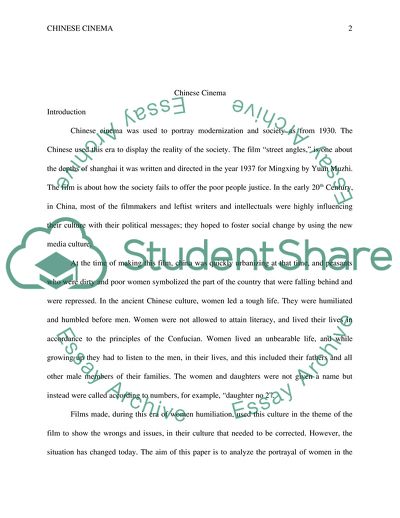Cite this document
(Chinese Cinema Essay Example | Topics and Well Written Essays - 1500 words, n.d.)
Chinese Cinema Essay Example | Topics and Well Written Essays - 1500 words. https://studentshare.org/visual-arts-film-studies/1775248-chinese-cinema
Chinese Cinema Essay Example | Topics and Well Written Essays - 1500 words. https://studentshare.org/visual-arts-film-studies/1775248-chinese-cinema
(Chinese Cinema Essay Example | Topics and Well Written Essays - 1500 Words)
Chinese Cinema Essay Example | Topics and Well Written Essays - 1500 Words. https://studentshare.org/visual-arts-film-studies/1775248-chinese-cinema.
Chinese Cinema Essay Example | Topics and Well Written Essays - 1500 Words. https://studentshare.org/visual-arts-film-studies/1775248-chinese-cinema.
“Chinese Cinema Essay Example | Topics and Well Written Essays - 1500 Words”. https://studentshare.org/visual-arts-film-studies/1775248-chinese-cinema.


